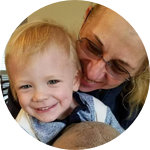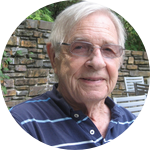About This Project
Survival rates for cancers have seen a 20% increase in the United States over the last thirty years, but brain cancer has not benefited from these increasing survival rates. Less than one out of every ten people diagnosed with Glioblastoma Multiforme (GBM) will survive. GBM remains incredibly hard to treat due to its tentacles that spread throughout the brain. We will be exploring the improvement of hyperthermia therapies using magnetic nanoparticles to increase its efficiency.
Ask the Scientists
Join The DiscussionWhat is the context of this research?
Survival rates for cancers have seen a 20% increase in the United States over the last thirty years, yet brain cancer has seen a 1% increase (CDC). Less than one out of every ten people diagnosed with Glioblastoma Multiforme (GBM) will survive (AIHW National Cancer Statistics). GBM remains incredibly hard to treat due to its tentacles that spread throughout the brain and are difficult to eradicate.
We will be exploring the improvement of hyperthermia therapies using magnetic nanoparticles to increase its efficiency. Hyperthermia therapies directly heat the tumor. The increase in temperature causes death of the cancerous tissue while leaving healthy tissue relatively unharmed. Magnetic nanoparticles, like iron and iron oxide, help improve the efficiency of this type of treatment.
What is the significance of this project?
Having this data is immediately valuable because it could determine what particles are best suited for hyperthermia therapies. The data will provide researchers with specific challenges to solve in order to improve these cancer treatments. We want to know what product works the best in order to take advantage of hyperthermia therapies. Knowing what works well will improve the efficacy and reduce side effects of currently untreatable glioblastomas. It will also provide an option to those who cannot or opt not to have surgery and/or radiation and chemotherapy treatments.
What are the goals of the project?
The main goal of this research is to characterize iron and iron oxide nanoparticles of various sizes and coatings to determine which commercially available products are best for hyperthermia treatments of cancer. Our secondary goal includes the synthesis of new iron nanoparticles by our research team tailoring them for use as a hyperthermia agent. These will be included in the study to determine if the nanoparticles developed by our research group have an advantage over what is currently available.
Budget
The majority of our budget will be spent on purchasing commercially available iron nanoparticles. We will purchase a variety of nanoparticles that differ in size and coatings. These nanoparticles will be evaluated in our lab to determine their efficacy as agents to improve hyperthermia treatments. The thermocouple will be instrumental in determining the heating rate of each nanoparticle; the heating rate is a crucial aspect of the particles ability to safely destroy tumors. Other lab equipment items (such as cuvettes and solvents) will be purchased to carry out experiments.
Endorsed by
 Project Timeline
Project Timeline
Our first milestone will be to acquire iron nanoparticles of various sizes and coatings to test. After receiving the nanoparticles we will begin heating experiments on them using a Nd:YAG laser. We will then develop our own metallic iron nanoparticles to test. We will characterize all of the nanoparticles using Mӧssbauer Spectroscopy. After concluding characterization studies, we will analyze the results.
Apr 04, 2018
Project Launched
May 11, 2018
Purchase iron and iron oxide nanoparticles
May 25, 2018
Conduct heating experiments on nanoparticles
Jun 22, 2018
Develop metallic iron nanoparticles
Jul 13, 2018
Characterize nanoparticles
Meet the Team
Julie King
The research team will be supervised by Associate Professor Dr. Jacqueline A. Johnson and includes Julie King, Adam Evans, Chad Bond, and Jason Hah. Julie earned her Master of Science degree in Biomedical Engineering from the University of Tennessee Space Institute and her Bachelor of Science in Physics and Mathematics from King University. Adam earned his Master of Science and Bachelor of Science degrees in Biomedical Engineering from the University of Tennessee. Chad received his Bachelor of Science in Chemistry from the University of the Cumberlands. Jason received his Master of Science degree in Biomedical Engineering from the University of Tennessee Space Institute and his Bachelor of Science in Physics from Coe College.
Lab Notes
Nothing posted yet.
Project Backers
- 3Backers
- 1%Funded
- $45Total Donations
- $15.00Average Donation


